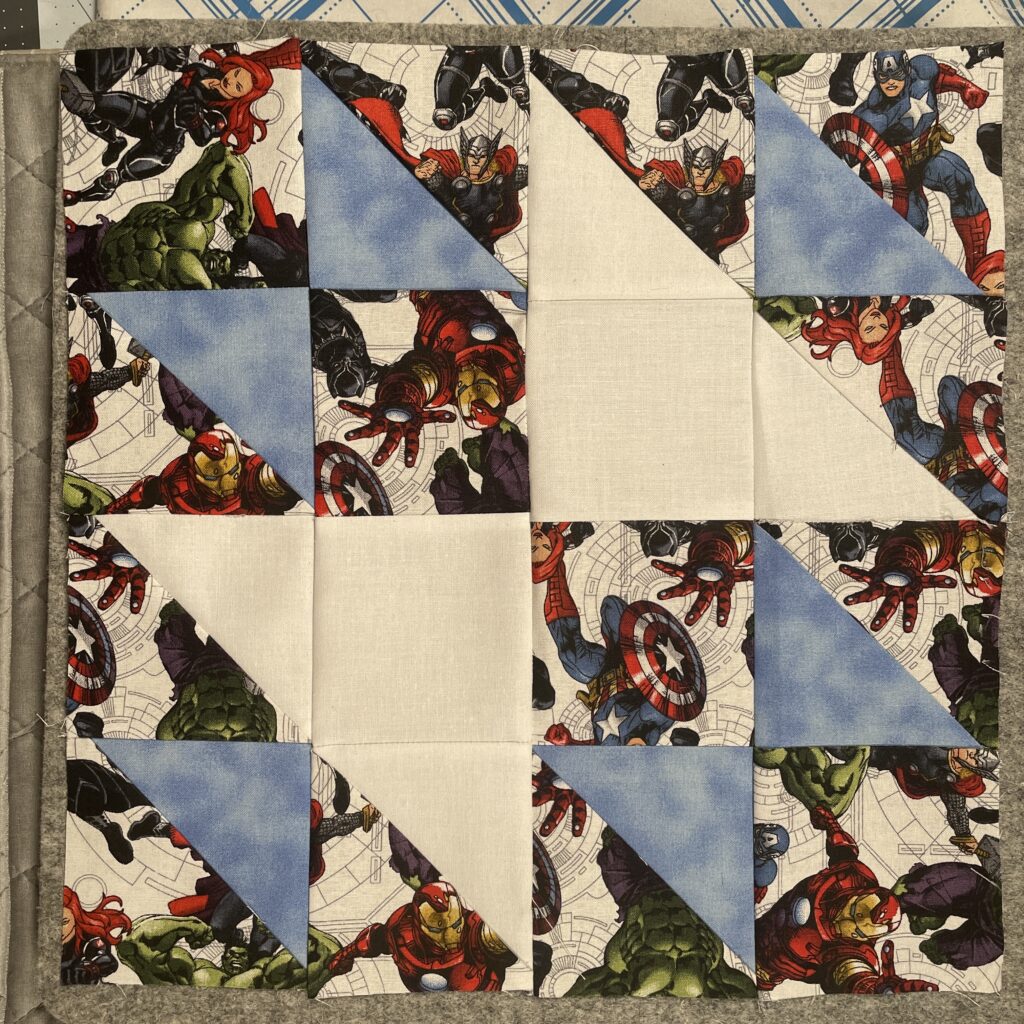
The Hovering Hawks quilt block is a traditional quilt pattern with roots in early American quilting. It is a geometric design typically made up of half-square triangles and squares arranged to create a dynamic, swirling motion reminiscent of hawks in flight. The pattern is often seen in two-tone or multi-fabric variations, giving it a sense of movement and contrast.
Historical Background
• 19th Century Origins: Like many traditional quilt blocks, Hovering Hawks is believed to have originated in the 19th century when quilting flourished as both a necessity and an art form in the United States. Quilt blocks often took inspiration from nature, daily life, and patriotic themes.
• Symbolism: The name “Hovering Hawks” suggests motion and vigilance, possibly reflecting the keen eyesight and hovering motion of hawks hunting their prey. In pioneer and homesteading times, nature-inspired quilt blocks often carried deeper meanings related to survival, observation, and protection.
• Civil War Quilts: Some quilt historians suggest that patterns like Hovering Hawks may have been used in quilts made during the Civil War era, either as fundraisers for soldiers or as practical bedding for households.
Design & Variations
• Traditional Layout: The block is usually built on a 4×4 grid of half-square triangles and squares, creating a sharp, high-contrast look.
• Color Choices: Quilters often use contrasting colors, such as darks and lights, to emphasize the hawk-like motion in the design.
• Variations: Some versions of Hovering Hawks resemble other traditional patterns, such as Flying Geese or Bear’s Paw, but with a more distinct swirling or hovering effect.
Use in Modern Quilting
Today, Hovering Hawks remains a beloved pattern among traditional and modern quilters alike. It is frequently used in scrappy quilts, two-tone designs, and heritage quilt reproductions. The bold angles and movement make it a striking choice for contemporary quilts while still honoring its historical roots.
